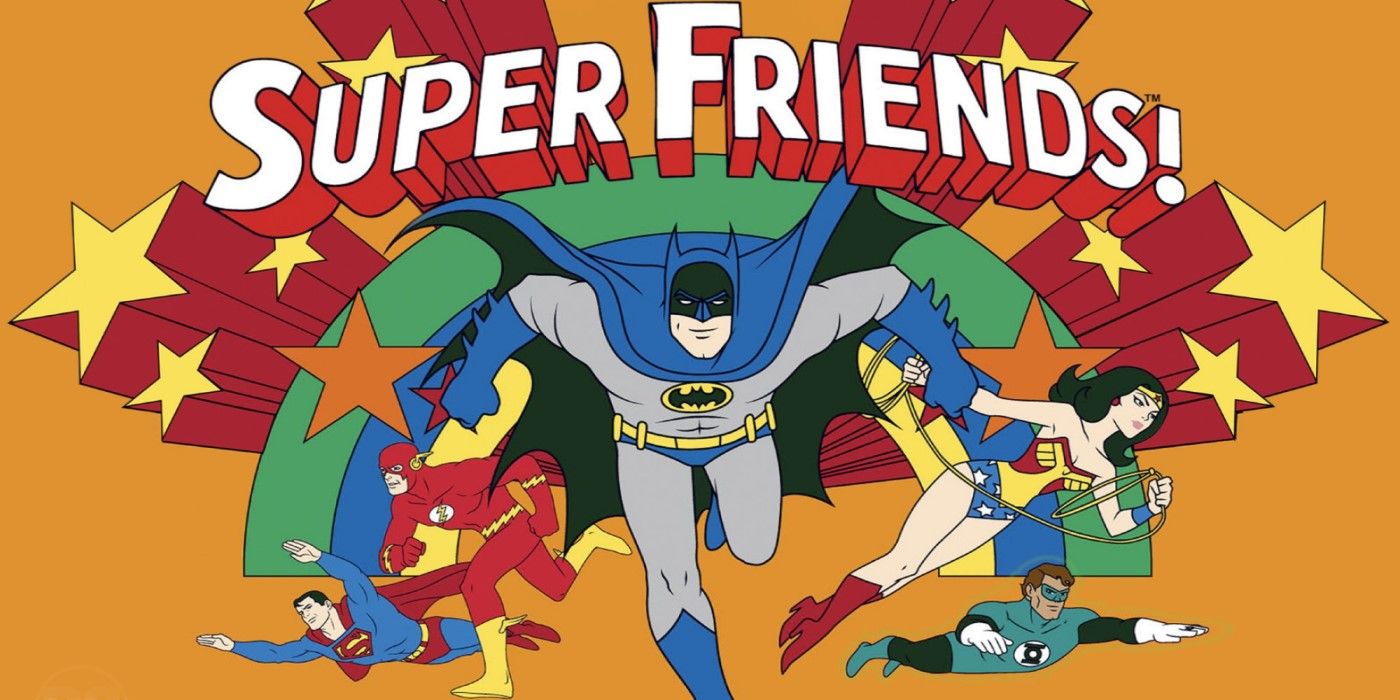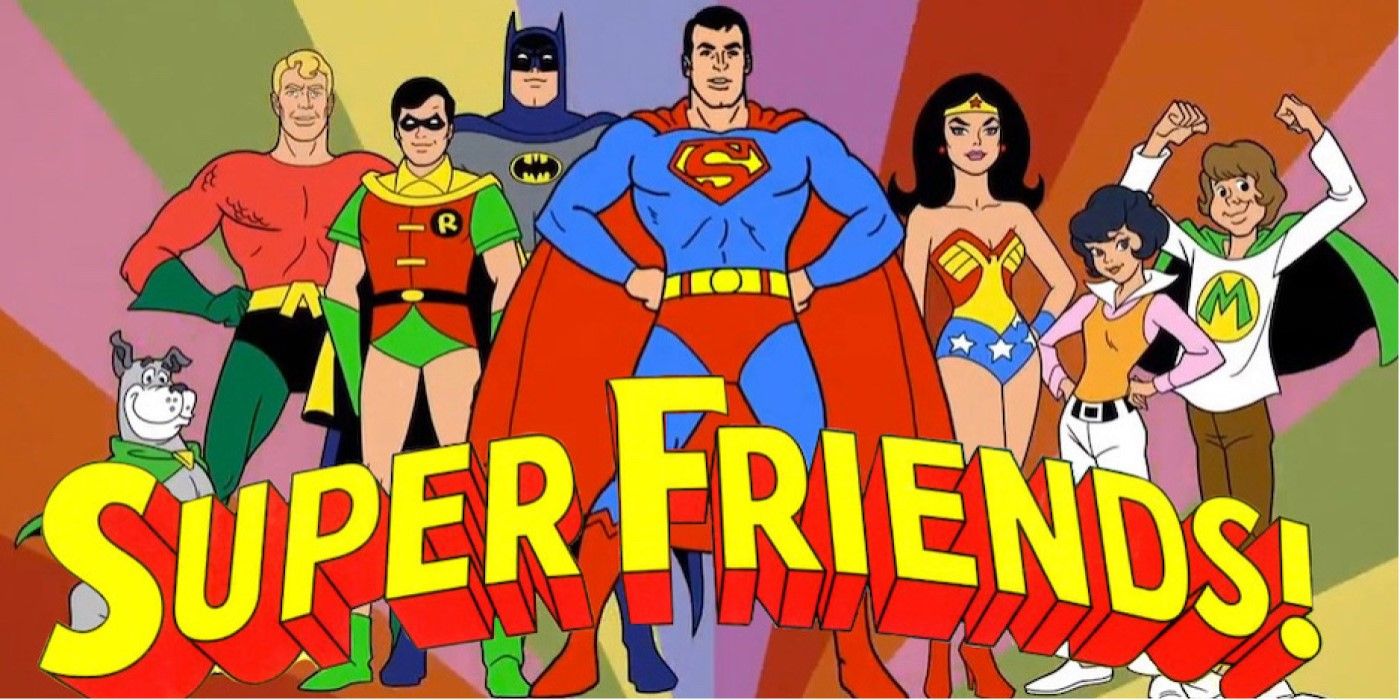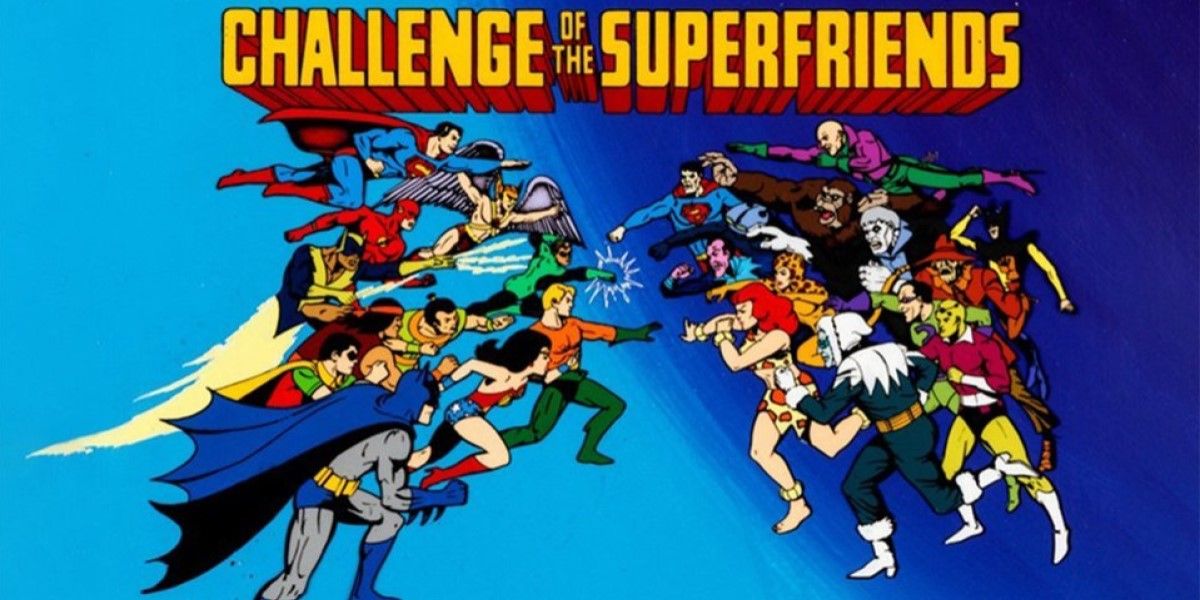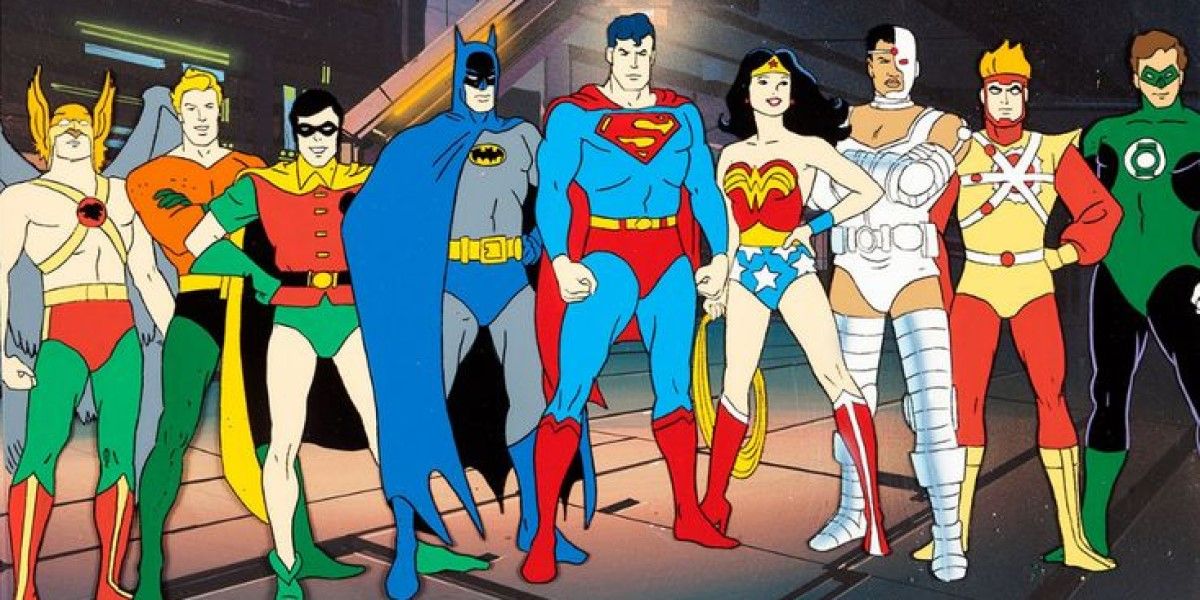The Big Picture
- Super Friends, the beloved cartoon series, debuted in 1973 and went through many iterations, with a total of 9 different series over the years.
- The original Super Friends series focused on teaching about environmental problems while avoiding violence and associations with the military.
- The series introduced iconic characters such as the Wonder Twins and the Legion of Doom, and paved the way for future Justice League adaptations like Justice League Unlimited.
For many, Saturday mornings consisted of pajamas, cereal, and a steady stream of cartoons. Names like The Flintstones or Captain Caveman still evoke warm memories to this day. Few cartoons, though, seemed to be on the air throughout the reign of Saturday morning cartoons. Scooby-Doo is one that seemed to perpetually be on TV, starting with the 1969 debut of Scooby-Doo, Where Are You! to A Pup Named Scooby-Doo in 1988, with many iterations in between and beyond (including the loathed introduction of Scrappy-Doo in 1979’s Scooby-Doo and Scrappy-Doo). Another is Super Friends, the cartoon that brought DC Comics’ Justice League of America to life between 1973 and 1986. Like Scooby-Doo, the Super Friends went through many iterations in that time, with no less than 9 different series, each slightly different from the others. So without further ado, the history of the many lives of Super Friends.
DC Super Friends
The greatest of the DC Comics superheroes work together to uphold the good with the help of some young proteges.
- Release Date
- September 8, 1973
- Cast
- Casey Kasem, olan soule, Frank Welker, Michael Bell
- Main Genre
- Animation
- Seasons
- 9
‘Super Friends’ Debuts in 1973 With One-Time “Junior Super Friends”
When ABC acquired the rights to the DC Comics characters in 1973, they set about adapting the publisher’s famed Justice League of America superhero team for television with the help of Hanna-Barbera. ABC wanted a non-violent series that would not be seen as offensive by parents and advocacy groups, while Hanna-Barbera wanted to avoid associations with the military during the time of the Vietnam War, naming the project Super Friends to curtail accusations of patriotism stirred by the “of America.”
They got what they wanted with 16 episodes, each with a standalone story across 45 minutes, with a focus on the team teaching about environmental problems like climate change, drilling, pollution, or other societal ills. In addition to the team of Superman (Danny Dark), Wonder Woman (Shannon Farnon), Batman (Olan Soule), Robin (Casey Kasem), and Aquaman (Norman Alden), three “Junior Super Friends” tagged along on the adventures: Wendy (Sherry Alberoni), Marvin (Frank Welker), and Wonder Dog (Welker). The trio had no discernible superpowers to speak of, unless you count Wonder Dog’s Scooby-Doo-like ability to speak, and would not appear again in any of the other series (the 1973 series also featured the one and only appearance of DC’s Plastic Man with the Super Friends, but he would land a show of his own). The series was canceled in 1974.
‘Super Friends’ Introduces the Wonder Twins in 1977 and the Legion of Doom in 1978
Super Friends would be rebroadcast between 1976 and 1977, but there wouldn’t be anything new until September 1977 and the debut of The All-New Super Friends Hour. The trio of Wendy, Marvin and Wonder Dog were ousted in favor of alien shape-shifters the Wonder Twins, Zan (Michael Bell) and Jayna (Louise Williams), and their space monkey Gleek, which time has been far, far kinder to. Unlike the original series, The All-New Super Friends Hour was split into four different stories. The first segment had two of the main heroes team-up for an adventure. The second focused on the Wonder Twins, with stories that were primarily teen-centric. The third segment had the entire crew of the Super Friends, including the Wonder Twins, and the fourth segment was another team-up between one of the primary Super Friends and a guest hero like the Flash (Barney Phillips) or the Atom (Wally Burr).
This would also be the series where the Super Friends “got woke” and introduced three ethnically diverse superheroes: Black Vulcan (Buster Jones), an African-American with lightning powers (similar to Black Lightning); Samurai (Jack Angel), a Japanese hero with the ability to manipulate wind and fire, become invisible, and cast illusions; Apache Chief (Michael Rye), a Native American who can alter his size, has ESP, can understand every language and the completely un-cliched abilities as a master tracker and survivalist (a fourth, Mexican superhero El Dorado (Fernando Escandon) wouldn’t appear until 1981).
1978 brought what is arguably the most well-known of the Super Friends series with Challenge of the Superfriends. Episodes had two segments each. The first was standard adventures with the Super Friends, similar to the third segment of The All-New Super Friends Hour. The second segment, though, was actually named Challenge of the Superfriends, and was the first of the Super Friends series featuring the DC super villains of the comics: the Legion of Doom. From their home base in a murky swamp, Lex Luthor (Stanley Jones) led a group of 12 other nasties, including Riddler (Michael Bell), Brainiac (Ted Cassidy), Giganta (Ruth Forman), and Sinestro (Don Messick). Week after week, the Legion of Doom aimed to take over the world with elaborate plans to destroy the Justice League (sans the Wonder Twins and Gleek), and week after week they would fail, only to escape and plot their next plan the following Saturday. The World’s Greatest Super Friends would bring the 1970s Super Friends to an end, with most episodes being reruns of The All-New Super Friends Hour and Challenge of the Superfriends. The eight original episodes were not even necessarily original, borrowing from the likes of The Wizard of Oz and 1,001 Arabian Nights.
‘Super Friends’ Paved the Way for ‘Justice League Unlimited’
The Super Friends kicked off the 1980s with SuperFriends, with the series now split into three seven-minute shorts and a rerun of one of the series from the previous six years. The new shorts offered team-ups between the Super Friends and introduced the aforementioned El Dorado to the Super Friends world, but that would be the most interesting aspect of the newest series. However, at least it offered new content, unlike the 1982-1983 The Best of the Super Friends, which was just reruns of the previous seven series and none of the seven-minute shorts of SuperFriends. 1983 would turn out to be one of the oddest years for the Super Friends, as most North Americans never even got to see the 24 “lost episodes.” See, ABC had canceled The Best of the Super Friends and didn’t make a time slot available. There were time slots available in Australia, however, so fans Down Under were privy to three-story episodes that provided unique team ups between heroes and a variety of villains. As per the previously cited Decider column, one episode even featured a fight between Gorilla Grodd and Gleek.
The penultimate Super Friends series debuted in 1984: SuperFriends: The Legendary Super Powers Show. The series tied into Kenner’s Super Powers toy and merchandise line, not uncommon for cartoons released in the 1980s. It was the first series in some time that shook up the status quo, phasing out the Wonder Twins and Gleek in favor of teen hothead hero Firestorm (Mark Taylor), and bringing in famed actor Adam West to voice Batman. Established super villains from the comics joined the Legion of Doom alums, with Darkseid (Frank Welker) and Mister Mxyzptlk (Welker) seen alongside Lex Luthor and Brainiac (Stanley Ralph Ross). The format of the series was two 11-minute stories over a half-hour. The Super Friends 12-year run would go out with a whimper, with only eight episodes for the final series, The Super Powers Team: Galactic Guardians. Six of the episodes consist of a single story, while the other two episodes have two stories.
Despite its short life, Galactic Guardians is notable for a number of reasons. It marked the first appearance of Cyborg (Ernie Hudson), the only Super Friends appearance of the Clown Prince of Crime himself, the Joker (Frank Welker), and was the very first onscreen account of Batman’s origin story, with his parents being shot in a Gotham alleyway in the episode “The Fear.” It wouldn’t mark the end of DC’s characters in cartoons, of course, with series like Justice League Unlimited carrying on the tradition, but Super Friends would end there, with ABC and Hanna-Barbera successfully ending the team that the Legion of Doom never could.
Super Friends is available for purchase on Prime Video in the U.S.
Denial of responsibility! TechCodex is an automatic aggregator of the all world’s media. In each content, the hyperlink to the primary source is specified. All trademarks belong to their rightful owners, and all materials to their authors. For any complaint, please reach us at – [email protected]. We will take necessary action within 24 hours.
Khushi Patel is a science fiction author who lives in Austin, Texas. She has published three novels, and her work has been praised for its originality and imagination. Khushi is a graduate of Rice University, and she has worked as a software engineer. She is a member of the Science Fiction Writers of America, and her books have been nominated for several awards.





